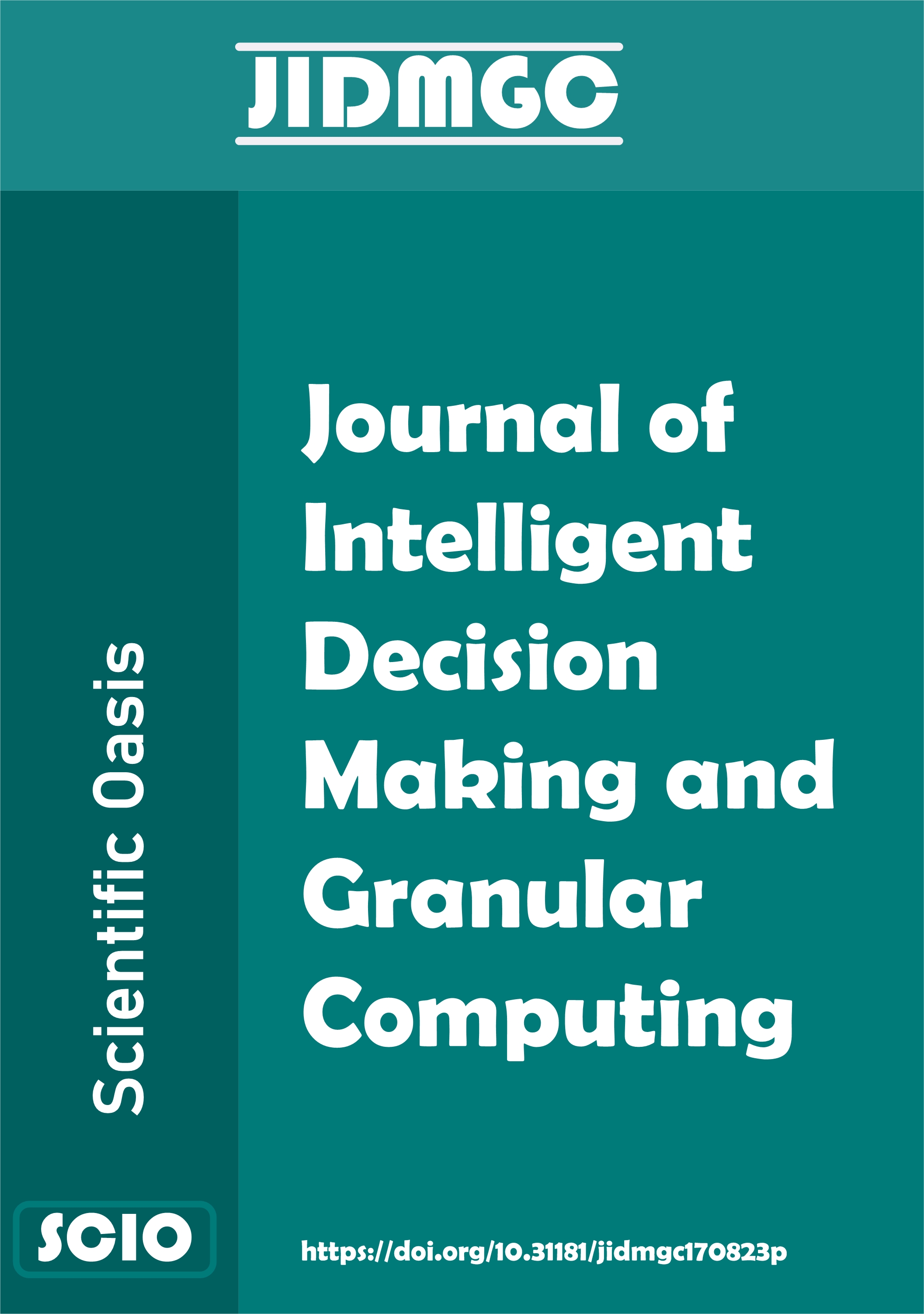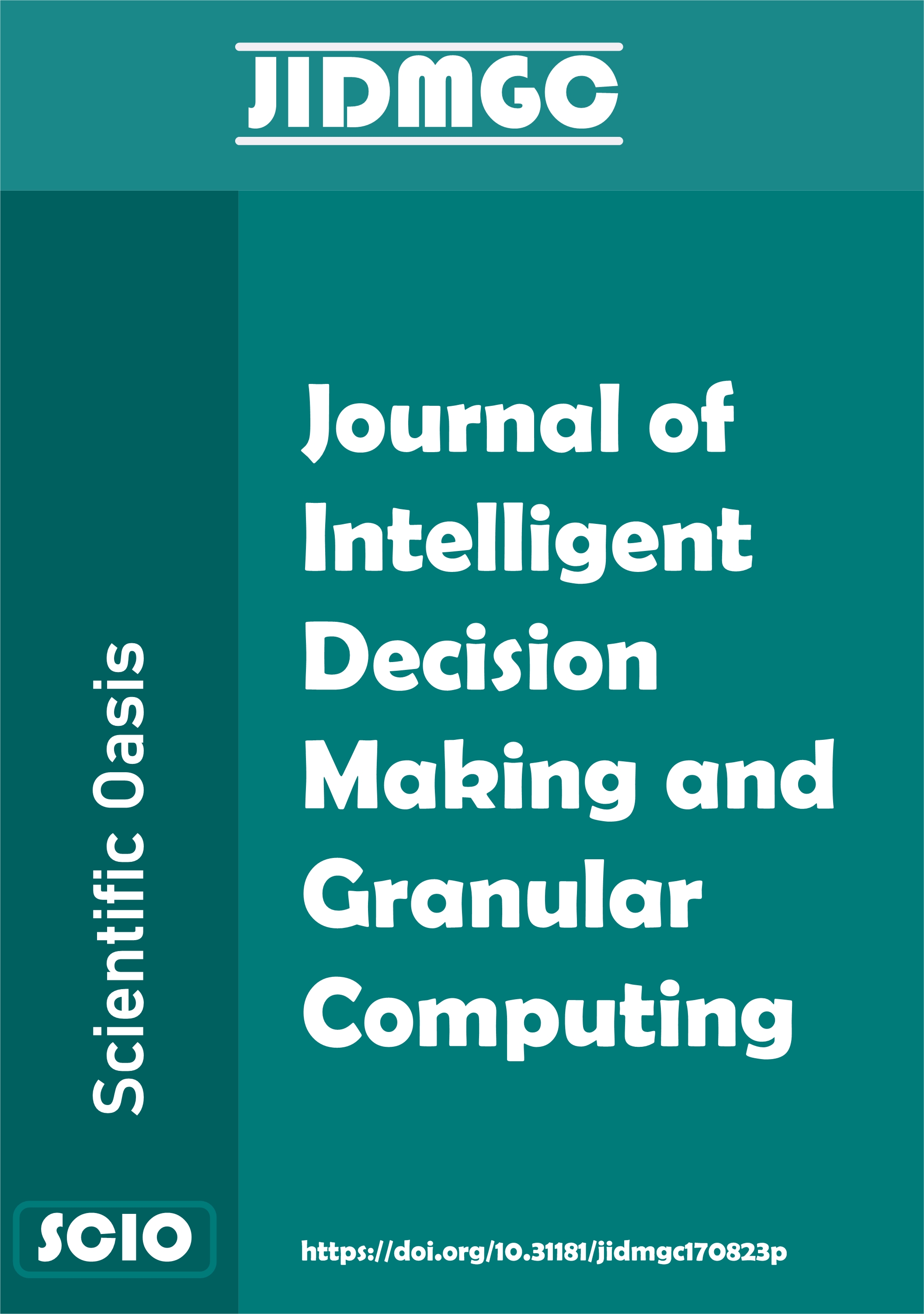Prioritizing Design Criteria for Unmanned Helicopter Systems under Uncertainty using Fuzzy Best Worst Method Approach
DOI:
https://doi.org/10.31181/jidmgc1120251Keywords:
Unmanned aerial vehicles, UAV, Unmanned Helicopter, Helicopter, Best-worst method, BWM, Fuzzy sets, Multi-criteria decision making, MCDMAbstract
Unmanned helicopter systems, as a subcategory of rotary-wing unmanned aerial vehicles (UAVs), have gained increasing attention in both military and civilian domains due to their vertical take-off and landing (VTOL) capabilities, hovering stability, and operational flexibility in confined or complex environments. However, the limited number of operational platforms and prototypes highlights the need for systematic evaluation and development efforts. This study aims to identify and assess critical performance criteria for unmanned helicopters, drawing on an extensive review of existing models and technological trends. Based on the most commonly emphasized parameters in the global UAV landscape, five core evaluation criteria were selected: payload capacity, endurance, control range, maximum speed, and dimensional constraints. To systematically analyze these criteria, the Fuzzy Best-Worst Method (FBWM) was applied, enabling expert-driven prioritization under uncertainty and linguistic vagueness. The use of FBWM not only enhances the robustness of the decision-making process but also provides a structured foundation for comparative assessment of existing and prototype unmanned helicopter systems. The findings contribute to the literature by proposing a reproducible and adaptable evaluation framework, offering strategic insights for future design priorities and national development programs. This study represents one of the first applications of fuzzy multi-criteria decision-making approaches specifically tailored to unmanned helicopters, marking a significant step toward structured technology assessment in this emerging domain.
Downloads
References
Yılmaz, N., & Gencer, C. T. (2019). Sensör görüş yeteneklerinin İHA rota optimizasyonuna entegrasyonu: doğrusal bir model ve sezgisel bir algoritma önerisi. Gazi Üniversitesi Mühendislik Mimarlık Fakültesi Dergisi, 34(4), 1917–1928. https://doi.org/10.17341/gazimmfd.571630
Altundaş, A., Arıkan, M., & Erol, S. Çok üslü heterojen filolu insansız hava araçlarının zaman pencereli görevlere rotalanması ve faydalı yük planlaması. Gazi Üniversitesi Mühendislik Mimarlık Fakültesi Dergisi, 40(3), 1611–1624. https://doi.org/10.17341/gazimmfd.1559891
Rojas Viloria, D., Solano‐Charris, E. L., Muñoz‐Villamizar, A., & Montoya‐Torres, J. R. (2021). Unmanned aerial vehicles/drones in vehicle routing problems: A literature review. International Transactions in Operational Research, 28(4), 1626–1657. https://doi.org/10.1111/itor.12783
Ercan, C., & Gencer, C. (2018). A decision support system for dynamic heterogeneous unmanned aerial system fleets. Gazi University Journal of Science, 31(3), 863–877.
Goraj, Z., Frydrychewicz, A., Świtkiewicz, R., Hernik, B., Gadomski, J., Goetzendorf-Grabowski, T., ... & Chajec, W. (2004). High altitude long endurance unmanned aerial vehicle of a new generation—a design challenge for a low cost, reliable and high performance aircraft. Bulletin of the Polish Academy of Sciences Technical Sciences, 173–194.
Panagiotou, P., & Yakinthos, K. (2020). Aerodynamic efficiency and performance enhancement of fixed-wing UAVs. Aerospace Science and Technology, 99, 105575. https://doi.org/10.1016/j.ast.2019.105575
Zeng, Y., Xu, J., & Zhang, R. (2019). Energy minimization for wireless communication with rotary-wing UAV. IEEE Transactions on Wireless Communications, 18(4), 2329–2345. https://doi.org/10.1109/TWC.2019.2902559
Misra, A., Jayachandran, S., Kenche, S., Katoch, A., Suresh, A., Gundabattini, E., ... & Legesse, A. A. (2022). A review on vertical take‐off and landing (VTOL) tilt‐rotor and tilt wing unmanned aerial vehicles (UAVs). Journal of Engineering, 2022(1), 1803638. https://doi.org/10.1155/2022/1803638
Mohsan, S. A. H., Khan, M. A., Noor, F., Ullah, I., & Alsharif, M. H. (2022). Towards the unmanned aerial vehicles (UAVs): A comprehensive review. Drones, 6(6), 147. https://doi.org/10.3390/drones6060147
Torresan, C., Berton, A., Carotenuto, F., Di Gennaro, S. F., Gioli, B., Matese, A., ... & Wallace, L. (2017). Forestry applications of UAVs in Europe: A review. International Journal of Remote Sensing, 38(8–10), 2427–2447. https://doi.org/10.1080/01431161.2016.1252477
Elmeseiry, N., Alshaer, N., & Ismail, T. (2021). A detailed survey and future directions of unmanned aerial vehicles (UAVs) with potential applications. Aerospace, 8(12), 363. https://doi.org/10.3390/aerospace8120363
Alvarenga, J., Vitzilaios, N. I., Valavanis, K. P., & Rutherford, M. J. (2015). Survey of unmanned helicopter model-based navigation and control techniques. Journal of Intelligent & Robotic Systems, 80, 87–138. https://doi.org/10.1007/s10846-014-0143-5
Petrescu, R. V., Aversa, R., Akash, B., Berto, F., Apicella, A., & Petrescu, F. I. (2017). Unmanned helicopters. Journal of Aircraft and Spacecraft Technology, 1(4), 241–248. https://doi.org/10.3844/jastsp.2017.241.248
Haider, B. A., Sohn, C. H., Won, Y. S., & Koo, Y. M. (2017). Aerodynamically efficient rotor design for hovering agricultural unmanned helicopter. Journal of Applied Fluid Mechanics, 10(5), 1461–1474. https://doi.org/10.18869/acadpub.jafm.73.242.27541
Dalamagkidis, K., Valavanis, K. P., Piegl, L. A., Dalamagkidis, K., Valavanis, K. P., & Piegl, L. A. (2012). Aviation history and unmanned flight. On Integrating Unmanned Aircraft Systems into the National Airspace System: Issues, Challenges, Operational Restrictions, Certification, and Recommendations, 11–42. https://doi.org/10.1007/978-94-007-2479-2_2
Kumar, R. (2025). A comprehensive review of MCDM methods, applications, and emerging trends. Decision Making Advances, 3(1), 185–199. https://doi.org/10.31181/dma31202569
Kahraman, C., Onar, S. C., & Oztaysi, B. (2015). Fuzzy multicriteria decision-making: A literature review. International Journal of Computational Intelligence Systems, 8(4), 637–666. https://doi.org/10.1080/18756891.2015.1046325
Pines, D. J., & Bohorquez, F. (2006). Challenges facing future micro-air-vehicle development. Journal of Aircraft, 43(2), 290–305. https://doi.org/10.2514/1.4922
Johnson, E., & Kannan, S. (2002, August). Adaptive flight control for an autonomous unmanned helicopter. In AIAA Guidance, Navigation, and Control Conference and Exhibit (p. 4439). https://doi.org/10.2514/6.2002-4439
Caballero, F., Merino, L., Ferruz, J., & Ollero, A. (2009). Vision-based odometry and SLAM for medium and high altitude flying UAVs. Journal of Intelligent and Robotic Systems, 54, 137–161. https://doi.org/10.1007/s10846-008-9257-y
Shen, S., Michael, N., & Kumar, V. (2011, May). Autonomous multi-floor indoor navigation with a computationally constrained MAV. In 2011 IEEE International Conference on Robotics and Automation (pp. 20–25). IEEE. https://doi.org/10.1109/ICRA.2011.5980357
Bouabdallah, S., & Siegwart, R. (2007, October). Full control of a quadrotor. *In 2007 IEEE/RSJ International Conference on Intelligent Robots and Systems* (pp. 153–158). IEEE. https://doi.org/10.1109/IROS.2007.4399042
Jin, Z., Nie, L., Li, D., Tu, Z., & Xiang, J. (2022). An autonomous control framework of unmanned helicopter operations for low-altitude flight in mountainous terrains. Drones, 6(6), 150. https://doi.org/10.3390/drones6060150
Anagnostis, I., Kotzanikolaou, P., & Douligeris, C. (2025). Understanding and securing the risks of unmanned aerial vehicle services. IEEE Access. https://doi.org/10.1109/ACCESS.2025.3549861
Laghari, A. A., Jumani, A. K., Laghari, R. A., & Nawaz, H. (2023). Unmanned aerial vehicles: A review. Cognitive Robotics, 3, 8–22. https://doi.org/10.1016/j.cogr.2022.12.004
Hoffmann, G., Huang, H., Waslander, S., & Tomlin, C. (2007, August). Quadrotor helicopter flight dynamics and control: Theory and experiment. In AIAA Guidance, Navigation and Control Conference and Exhibit (p. 6461). https://doi.org/10.2514/6.2007-6461
Rezaei, J. (2015). Best-worst multi-criteria decision-making method. Omega, 53, 49–57. https://doi.org/10.1016/j.omega.2014.11.009
Guo, S., & Zhao, H. (2017). Fuzzy best-worst multi-criteria decision-making method and its applications. *Knowledge-Based Systems, 121*, 23–31. https://doi.org/10.1016/j.knosys.2017.01.010
Pamučar, D., Ecer, F., Cirovic, G., & Arlasheedi, M. A. (2020). Application of improved best worst method (BWM) in real-world problems. Mathematics, 8(8), 1342. https://doi.org/10.3390/math8081342
Shang, Z., Yang, X., Barnes, D., & Wu, C. (2022). Supplier selection in sustainable supply chains: Using the integrated BWM, fuzzy Shannon entropy, and fuzzy MULTIMOORA methods. Expert Systems with Applications, 195, 116567. https://doi.org/10.1016/j.eswa.2022.116567
Salari, S., Karimi, A., Farvaresh, E., & Hokmabadi, R. (2025). An integrated approach to a predictive and ranking model of use error using fuzzy BWM and fuzzy TOPSIS. International Journal of Occupational Safety and Ergonomics, 31(1), 195–204. https://doi.org/10.1080/10803548.2024.2419283
Ecer, F., & Pamucar, D. (2020). Sustainable supplier selection: A novel integrated fuzzy best worst method (F-BWM) and fuzzy CoCoSo with Bonferroni (CoCoSo'B) multi-criteria model. Journal of Cleaner Production, 266, 121981. https://doi.org/10.1016/j.jclepro.2020.121981
Otay, I., Onar, S. Ç., Öztayşi, B., & Kahraman, C. (2024). Evaluation of sustainable energy systems in smart cities using a Multi-Expert Pythagorean fuzzy BWM & TOPSIS methodology. Expert Systems with Applications, 250, 123874. https://doi.org/10.1016/j.eswa.2024.123874
Banihashemi, S. A., Khalilzadeh, M., Antucheviciene, J., & Edalatpanah, S. A. (2023). Identifying and prioritizing the challenges and obstacles of the green supply chain management in the construction industry using the fuzzy BWM method. Buildings, 13(1), 38. https://doi.org/10.3390/buildings13010038
Hafezalkotob, A., & Hafezalkotob, A. (2017). A novel approach for combination of individual and group decisions based on fuzzy best-worst method. Applied Soft Computing, 59, 316–325. https://doi.org/10.1016/j.asoc.2017.05.036
Pamucar, D., Iordache, M., Deveci, M., Schitea, D., & Iordache, I. (2021). A new hybrid fuzzy multi-criteria decision methodology model for prioritizing the alternatives of the hydrogen bus development: A case study from Romania. International Journal of Hydrogen Energy, 46(57), 29616–29637. https://doi.org/10.1016/j.ijhydene.2020.10.172
Pamucar, D., Deveci, M., Canıtez, F., & Bozanic, D. (2020). A fuzzy Full Consistency Method-Dombi-Bonferroni model for prioritizing transportation demand management measures. Applied Soft Computing, 87, 105952. https://doi.org/10.1016/j.asoc.2019.105952
Bonferroni, C. (1950). Sulle medie multiple di potenze. Bollettino dell'Unione Matematica Italiana, 5(3–4), 267–270.
Downloads
Published
Issue
Section
License
Copyright (c) 2025 Hakan Ayhan Dağıstanlı (Author)

This work is licensed under a Creative Commons Attribution 4.0 International License.













 All site content, except where otherwise noted, is licensed under the
All site content, except where otherwise noted, is licensed under the 